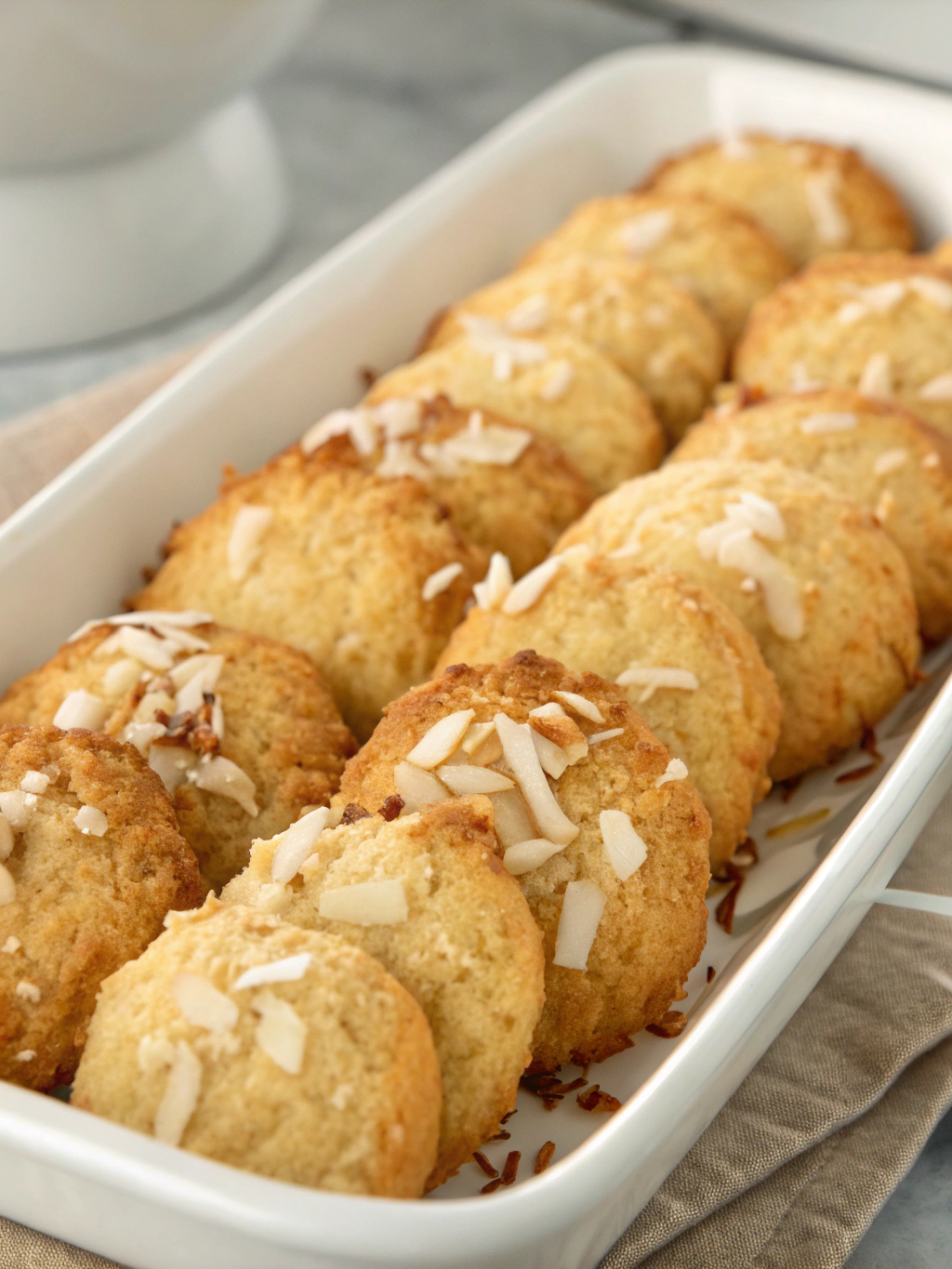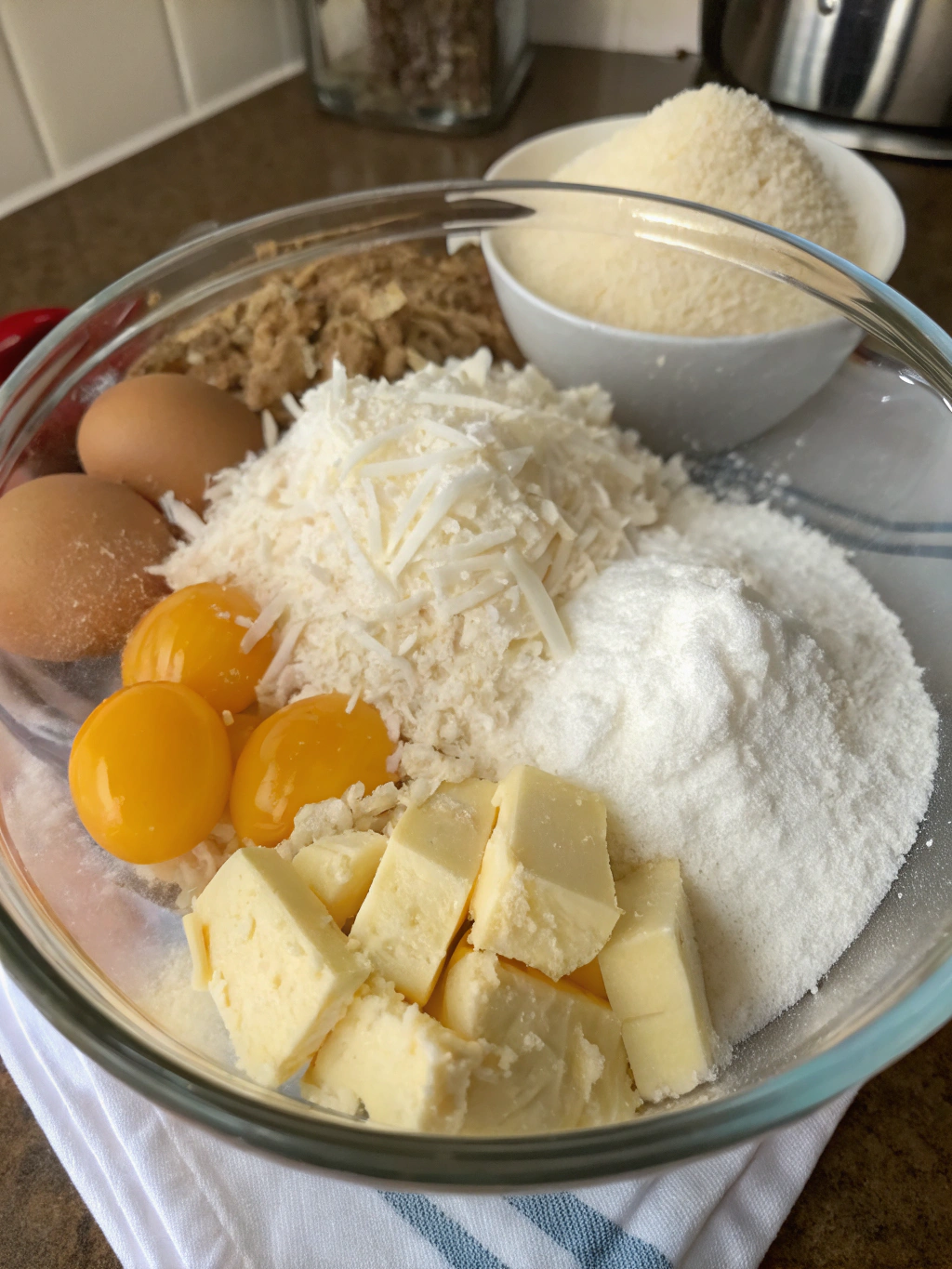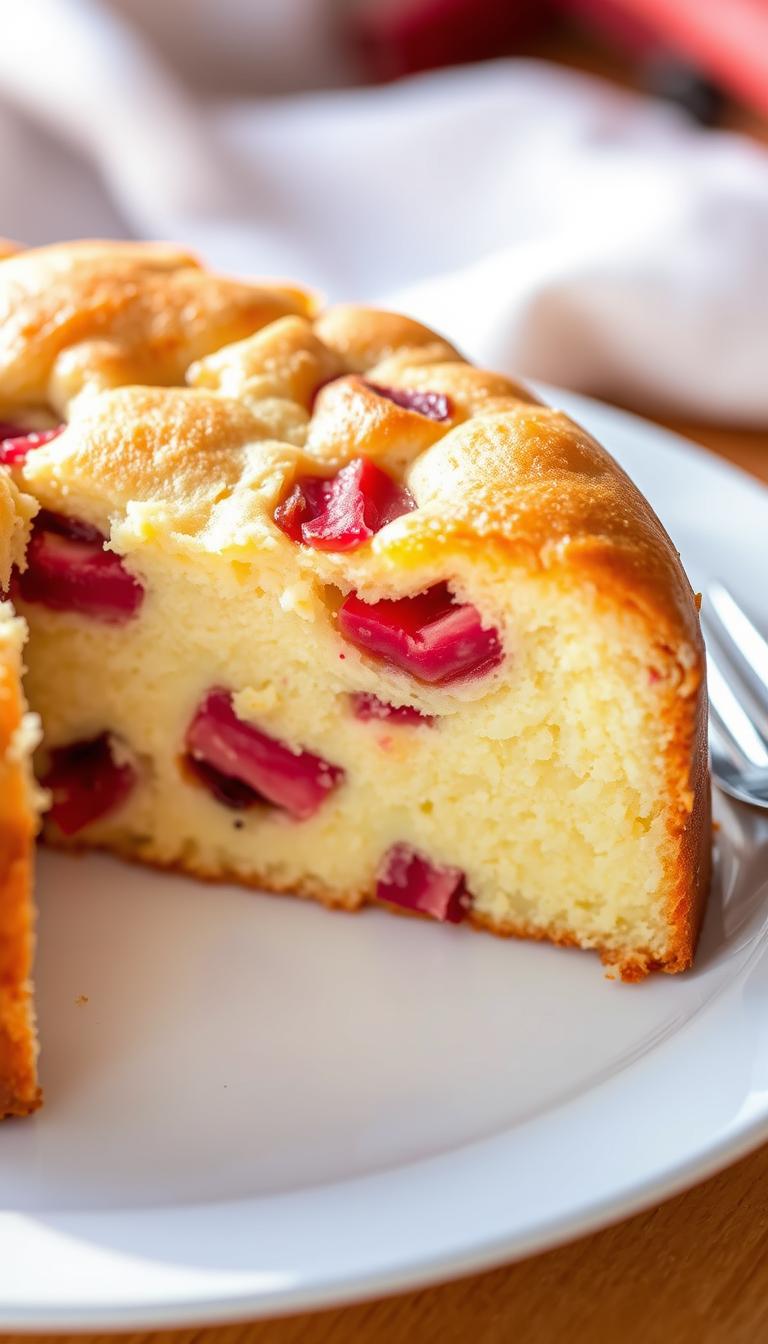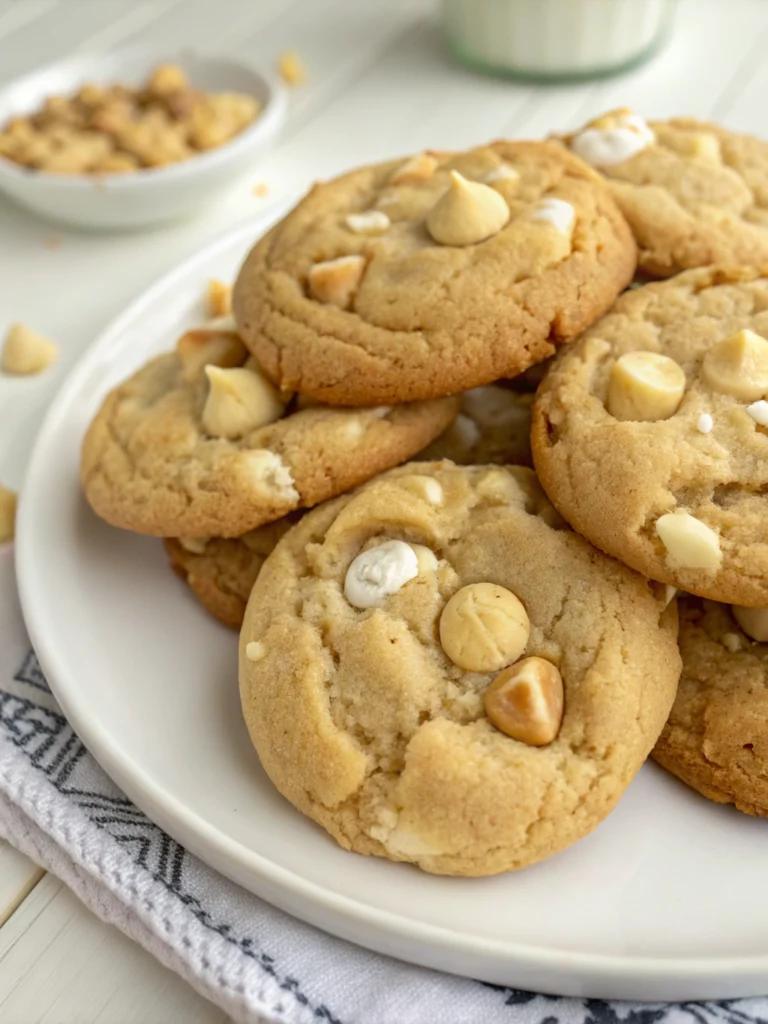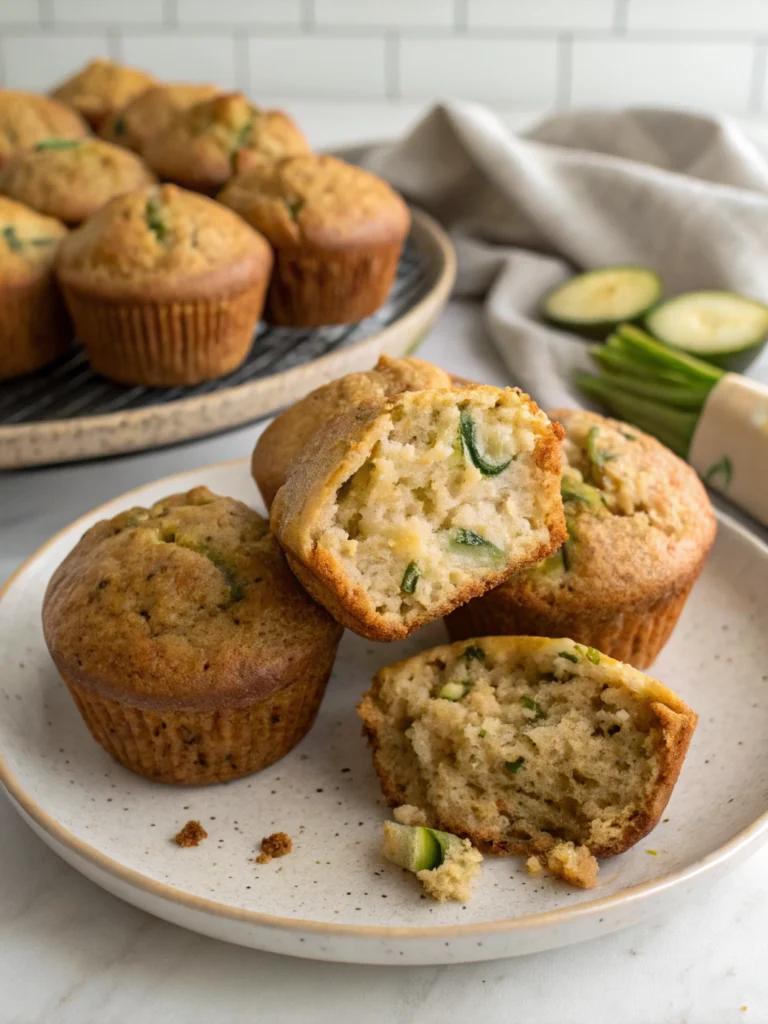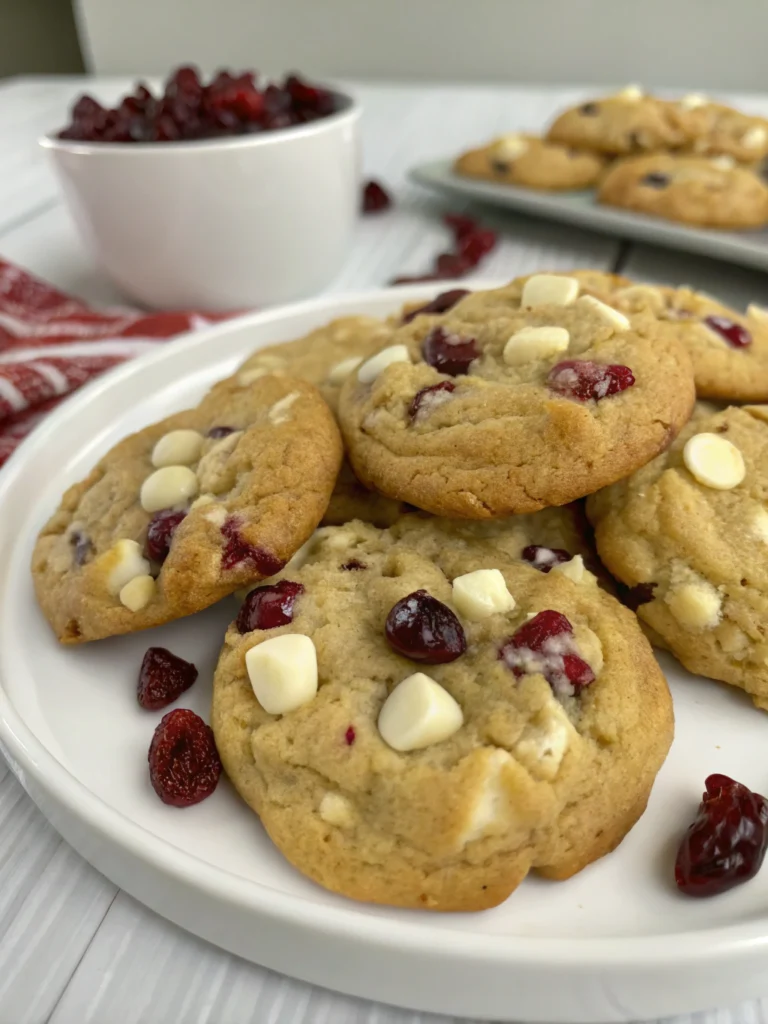Coconut Cookies
These irresistible coconut cookies combine a crisp exterior with a chewy center for the perfect sweet treat. Made with real coconut flakes and simple pantry ingredients, these homemade coconut cookies are ready in under 30 minutes!
Easy Coconut Cookies Recipe
There’s something magical about the aroma of fresh coconut cookies baking in the oven. This recipe transforms simple ingredients into bakery-quality treats that bring a tropical twist to your cookie jar. Perfect for holiday cookie exchanges, afternoon tea, or whenever you need a sweet coconut fix, these cookies balance sweetness with rich coconut flavor.
While many coconut cookies rely on artificial flavorings, this authentic recipe uses real coconut in multiple forms to create depth and dimension in every bite. It’s a family favorite passed down through generations, with my own special tweaks to enhance the texture and flavor profile.
THIS RECIPE:
- Uses both shredded coconut and coconut extract for maximum flavor
- Requires just 10 minutes of prep time
- Creates perfectly crisp edges with chewy centers
- Can be customized with chocolate or dried fruit additions
| Recipe Details | Information |
|---|---|
| Prep Time | 10 minutes |
| Cook Time | 12 minutes |
| Total Time | 22 minutes |
| Servings | 24 cookies |
| Yield | 2 dozen cookies |
Don’t let the simplicity fool you – these coconut cookies deliver impressive results with minimal effort. The dough comes together quickly, and the hardest part might be waiting for them to cool before sampling! Perfect for both beginning bakers and seasoned pros, this foolproof recipe creates consistent, delicious results every time.
Ingredients for Coconut Cookies
When making coconut cookies, ingredient quality makes all the difference. The star of this recipe – coconut – appears in multiple forms to create layered flavor. Using unsweetened coconut allows you to control the sweetness level, while high-quality butter creates that melt-in-your-mouth texture that elevates homemade cookies.
For the Cookie Dough:
- 1 cup (226g) unsalted butter, softened
- 3/4 cup (150g) granulated sugar
- 3/4 cup (150g) packed light brown sugar
- 2 large eggs, room temperature
- 1 teaspoon pure vanilla extract
- 1/2 teaspoon coconut extract
- 2 1/4 cups (281g) all-purpose flour
- 1 teaspoon baking soda
- 1/2 teaspoon salt
- 2 cups (160g) unsweetened shredded coconut
- 1/2 cup (60g) chopped macadamia nuts (optional)
For the Coconut Topping (Optional):
- 1/4 cup (20g) unsweetened coconut flakes
- 2 tablespoons (25g) coarse sugar
| Ingredient Category | Recommended Quantity | Quality Tips |
|---|---|---|
| Coconut | Unsweetened shredded | Look for preservative-free options with bright white color |
| Butter | European-style | Higher butterfat content creates richer cookies |
| Extracts | Pure, not imitation | Real vanilla and coconut extracts provide authentic flavor |
| Flour | Unbleached all-purpose | Measure by weight for best results |
| Sugar | Fine granulated | Ensures smooth incorporation into butter |
Pro tip: Toast 1/2 cup of the coconut before adding to the dough for enhanced nutty flavor and aroma. Simply spread on a baking sheet and bake at 325°F for 5-8 minutes until golden.
How to Make Coconut Cookies
Making perfect coconut cookies involves a straightforward process that focuses on proper mixing and baking techniques. The key is creating a well-emulsified dough that incorporates the coconut evenly while maintaining the right texture. Follow these steps carefully for cookies with crisp edges and chewy centers.
Prepare your workspace and ingredients
- Preheat oven to 350°F (175°C)
- Line 2-3 baking sheets with parchment paper
- Measure all ingredients and bring butter and eggs to room temperature
Cream butter and sugars
- In a large mixing bowl, beat softened butter until creamy (about 1 minute)
- Add both granulated and brown sugars and beat on medium speed for 2-3 minutes until light and fluffy
- Scrape down the sides of the bowl with a spatula halfway through
Add wet ingredients
- Beat in eggs one at a time, mixing well after each addition
- Add vanilla extract and coconut extract, mixing until combined
Incorporate dry ingredients
- In a separate bowl, whisk together flour, baking soda, and salt
- Add dry mixture to wet ingredients in two additions, mixing on low speed until just combined
- Be careful not to overmix, which can make cookies tough
Add coconut and optional mix-ins
- Fold in the shredded coconut and nuts (if using) with a rubber spatula
- Mix just until evenly distributed throughout the dough
Portion and prepare cookies
- Using a cookie scoop or tablespoon, portion dough into 1.5-inch balls
- Place dough balls on prepared baking sheets, leaving 2 inches between each
- For the optional topping, mix coconut flakes with coarse sugar and gently press onto cookie tops
Bake to perfection
- Bake in preheated oven for 10-12 minutes, rotating pans halfway through
- Cookies should be golden around the edges but still slightly soft in the center
- For crispier cookies, bake 1-2 minutes longer
Allow the coconut cookies to cool on the baking sheets for 5 minutes before transferring to a wire rack to cool completely. The cookies will continue to set while cooling, achieving that perfect chewy-crisp balance.
Tips for Making Coconut Cookies
Creating truly exceptional coconut cookies depends on mastering a few key techniques. These professional insights will elevate your cookies from good to unforgettable:
- Room temperature ingredients matter – Cold butter won’t cream properly, and cold eggs can cause the mixture to curdle
- Measure flour correctly – Spoon flour into measuring cups and level with a knife, or ideally, use a kitchen scale
- Don’t rush the creaming process – The air incorporated during butter-sugar creaming creates essential texture
- Chill the dough if your kitchen is warm – 30 minutes in the refrigerator helps prevent excessive spreading
| Technique | Recommendation | Reason |
|---|---|---|
| Mixing | Use paddle attachment at medium speed | Prevents incorporating too much air |
| Coconut incorporation | Fold by hand | Maintains proper texture distribution |
| Baking | One sheet at a time on center rack | Ensures even heat distribution |
| Testing doneness | Look for golden edges with slightly soft centers | Cookies will continue to firm up after removal |
For perfectly shaped cookies, use a light-colored, heavy-gauge aluminum baking sheet. Dark pans absorb more heat, potentially burning cookie bottoms before centers are done. If your cookies spread too much, the butter might be too warm or there may be too little flour in your dough.
Pro tip: For bakery-style coconut cookies with perfect edges, use a round cookie cutter slightly larger than your cookies to “scoot” around each cookie immediately after removing from the oven. This creates perfectly round cookies with appealing texture.
Make-Ahead Instructions
Coconut cookies are perfect candidates for make-ahead preparation, allowing you to enjoy freshly baked treats with minimal effort when needed.
Cookie Dough Preparation:
The complete cookie dough can be made up to 3 days in advance and stored in an airtight container in the refrigerator. When ready to bake, allow the dough to sit at room temperature for 30 minutes until scoopable.
For longer storage, roll the dough into balls and freeze on a baking sheet until solid (about 1 hour), then transfer to a freezer-safe container or bag. Frozen cookie dough balls will keep for up to 3 months and can be baked directly from frozen – just add 1-2 minutes to the baking time.
If you prefer to prepare and freeze a flat disc of dough instead of portioned cookies, wrap it tightly in plastic wrap, then aluminum foil, and freeze for up to 3 months. Thaw overnight in the refrigerator before portioning and baking.
When planning for holiday baking or special events, prepare your dry ingredients up to 2 weeks ahead and store in a labeled container. This streamlines the baking process when you’re ready to make a fresh batch.
Storing Leftovers
Proper storage is essential for maintaining the wonderful texture and flavor of your homemade coconut cookies.
For maximum freshness, store completely cooled cookies in an airtight container at room temperature with layers separated by parchment paper. When stored correctly, coconut cookies will remain fresh for up to 5 days, though they’re typically at their best within the first 3 days after baking.
To maintain optimal texture, add a slice of bread to the storage container – the bread will give up its moisture to the cookies, keeping them soft and chewy. Replace the bread slice if it becomes dry. For crispier cookies, skip the bread and just ensure your container is completely airtight.
If your kitchen is particularly warm or humid, refrigeration may be necessary. When refrigerating, be sure to use a truly airtight container to prevent the cookies from absorbing other food odors or excess moisture.
Pro tip: To refresh cookies that have started to harden, place them on a plate and microwave for 10-15 seconds, or warm in a 300°F oven for 3-4 minutes. Let cool slightly before enjoying.
Freezing Coconut Cookies
Freezing baked coconut cookies is an excellent way to extend their shelf life or prepare in advance for special occasions.
To freeze properly, ensure cookies are completely cooled. Place them in a single layer on a baking sheet and freeze until solid (approximately 1-2 hours). Once frozen, transfer the cookies to a freezer-safe container or heavy-duty freezer bag, placing parchment paper between layers to prevent sticking.
Properly frozen coconut cookies maintain quality for up to 3 months. Label your container with the date to track freshness. For additional protection against freezer burn, wrap each cookie individually in plastic wrap before placing in the container.
When you’re ready to enjoy your frozen coconut cookies, thaw them in one of these ways:
- Room temperature: Place wrapped cookies on a plate for 1-2 hours
- Refrigerator: Thaw overnight for a more gradual temperature change
- Quick method: Unwrap and microwave individual cookies for 15-20 seconds
For that fresh-baked taste, warm thawed cookies in a 300°F oven for 3-5 minutes. This reactivates the aromatic oils in the coconut, bringing back that wonderful fresh-baked aroma and flavor.
Serving Suggestions
Transform your coconut cookies from a simple treat to a memorable dessert with these serving suggestions:
Coconut cookies pair beautifully with complementary flavors and presentations. For an elegant dessert plate, serve warm cookies alongside a scoop of vanilla bean or coconut ice cream. The contrast of warm cookie and cold ice cream creates a delightful sensory experience.
Create a tropical dessert sammie by sandwiching mango or pineapple sorbet between two coconut cookies. Alternatively, spread a thin layer of chocolate ganache, dulce de leche, or lime curd between cookies for a more sophisticated treat.
Beverage Pairings:
- Coffee: The bitterness contrasts beautifully with the sweet coconut
- Thai iced tea: Complements the tropical coconut notes
- Hot chocolate: Creates a cozy, indulgent combination
- Coconut rum for adults: Enhances the coconut flavor profile
For a beautiful presentation, dust cooled cookies lightly with powdered sugar before serving, or drizzle with melted white chocolate and sprinkle with additional toasted coconut. Serve on a bamboo platter with fresh tropical fruit for a themed dessert display.
Coconut cookies are best served at room temperature when all the flavor notes are most pronounced. If you’ve refrigerated or frozen them, allow 15-20 minutes at room temperature before serving.
FAQ
Can I use sweetened coconut instead of unsweetened?
Yes, you can use sweetened coconut, but you’ll need to adjust the sugar in the recipe. Reduce both the granulated and brown sugar by 2 tablespoons each to compensate for the added sweetness. The texture may be slightly different as sweetened coconut contains more moisture.
How can I make these cookies gluten-free?
Substitute the all-purpose flour with a 1:1 gluten-free baking blend that contains xanthan gum. Brands like Bob’s Red Mill or King Arthur work well. Ensure all other ingredients, especially the vanilla and coconut extracts, are certified gluten-free.
My cookies spread too much during baking. What went wrong?
Several factors can cause excessive spreading: butter that’s too warm, not enough flour, or an oven that’s not hot enough. Try chilling the dough for 30 minutes before baking, checking your oven temperature with an oven thermometer, or adding 2 additional tablespoons of flour to the dough.
Can I add chocolate to these coconut cookies?
Absolutely! Fold in 3/4 cup of chocolate chips (dark, milk, or white) along with the coconut. For a more sophisticated version, dip half of each baked and cooled cookie into melted chocolate, then place on parchment paper until the chocolate sets.
How can I enhance the coconut flavor if I don’t have coconut extract?
If coconut extract isn’t available, substitute with 1 tablespoon of coconut cream (the thick part from the top of a can of coconut milk) and reduce the vanilla extract to 1/2 teaspoon. You can also use 2 tablespoons of cream of coconut (like Coco Lopez) and reduce the sugar by 1 tablespoon to maintain the right sweetness level.

